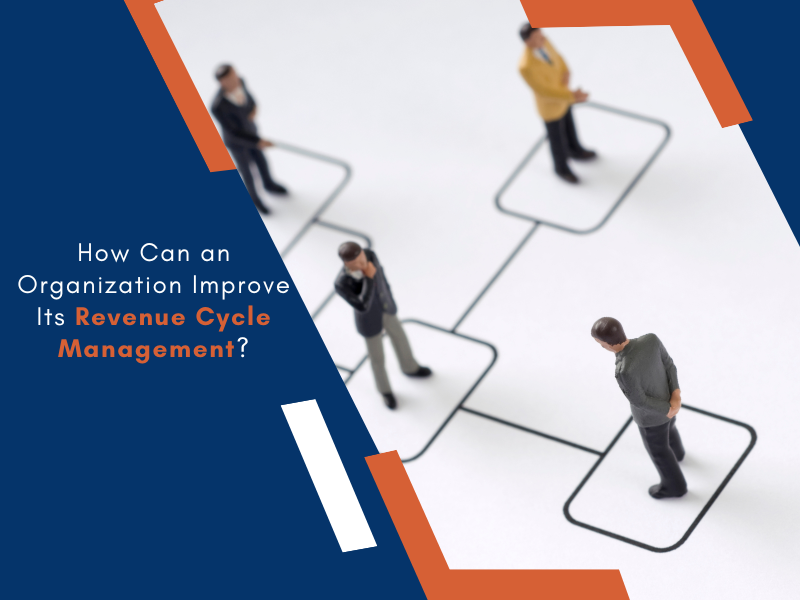Efficient revenue cycle management (RCM) is crucial for any healthcare organization to maintain financial health, reduce operational inefficiencies, and deliver high-quality care to patients. Poorly managed revenue cycles can result in delayed reimbursements, increased denials, and financial instability. To optimize this critical process, organizations must adopt strategies that address every aspect of the revenue cycle, from patient registration to claim resolution. Below, we outline actionable steps organizations can take to improve their revenue cycle management and achieve lasting success.
1. Streamline Patient Registration and Verification
Accurate patient data is the foundation of efficient revenue cycle management. Errors during registration, such as incorrect demographic information or insurance details, can lead to claim denials and delayed payments.
Key Steps:
- Implement an automated system to verify patient eligibility in real time.
- Train staff to ensure accurate data entry during the registration process.
- Regularly update insurance policies and payer requirements in the system.
Investing in technology that validates insurance details and captures data accurately can significantly reduce administrative burdens and improve cash flow.
2. Automate Billing Processes
Manual billing processes are prone to errors and inefficiencies, which can disrupt the revenue cycle. Automation tools can help organizations process claims faster and with fewer mistakes.
Benefits of Automation in RCM:
- Reduced errors in coding and billing.
- Faster claim submission and reimbursement cycles.
- Improved tracking of pending and denied claims.
Organizations should explore advanced billing software that integrates with their electronic health records (EHR) systems to ensure seamless data flow and billing accuracy.
3. Ensure Accurate Medical Coding
Accurate medical coding is essential to avoid claim denials and ensure compliance with payer requirements. Errors in coding, such as undercoding or upcoding, can trigger audits and financial penalties.
Strategies for Improvement:
- Hire certified medical coders to handle complex coding requirements.
- Regularly train coding staff on the latest regulations and guidelines.
- Conduct periodic audits to identify and address coding errors.
By focusing on coding accuracy, organizations can optimize reimbursements and avoid potential legal issues.
4. Enhance Denial Management
Claim denials are a significant barrier to achieving a healthy revenue cycle. To address this, organizations need a robust denial management strategy.
Steps to Reduce Denials:
- Analyze denial trends to identify common issues.
- Establish a dedicated team to resolve denied claims quickly.
- Work closely with payers to understand and adhere to their policies.
Preventing denials at the source and efficiently managing denied claims can drastically improve cash flow and reduce administrative workloads.
5. Leverage Analytics for Data-Driven Decisions
Data analytics is a powerful tool for improving revenue cycle management. By analyzing financial and operational data, organizations can identify trends, predict future challenges, and make informed decisions.
Key Metrics to Monitor:
- Days in accounts receivable (AR).
- Claim denial rates.
- Net collection rates.
Advanced analytics platforms can provide real-time insights, helping organizations pinpoint inefficiencies and implement targeted improvements.
6. Focus on Patient Financial Experience
With the rise of high-deductible health plans, patients are now responsible for a significant portion of healthcare costs. Enhancing the patient financial experience is key to ensuring timely payments and satisfaction.
How to Improve Patient Experience:
- Provide clear and transparent billing statements.
- Offer multiple payment options, including online portals.
- Educate patients about their financial responsibilities during registration.
Creating a patient-friendly financial experience not only improves payment collection but also builds trust and loyalty.
7. Regularly Train and Educate Staff
Well-trained staff are essential to effective revenue cycle management. Employees involved in billing, coding, and collections should have a thorough understanding of industry regulations and best practices.
Training Tips:
- Schedule regular training sessions on coding updates, payer guidelines, and compliance.
- Encourage collaboration between departments to improve communication.
- Provide access to resources like webinars and workshops.
A knowledgeable workforce ensures that the revenue cycle runs smoothly and efficiently.
8. Implement a Centralized RCM System
Fragmented systems can hinder the efficiency of the revenue cycle. A centralized RCM system integrates all aspects of the process, from patient registration to claim resolution.
Advantages of Centralized Systems:
- Improved visibility into financial performance.
- Enhanced coordination between departments.
- Streamlined workflows and reduced duplication of efforts.
Investing in an all-in-one RCM platform ensures consistency and accuracy across the entire revenue cycle.
9. Outsource RCM Functions
For organizations struggling to manage their revenue cycles in-house, outsourcing can be a cost-effective solution. Partnering with experienced RCM providers allows healthcare organizations to focus on patient care while experts handle the complexities of billing, coding, and claims management.
Key Benefits of Outsourcing:
- Access to specialized expertise and technology.
- Faster claim processing and improved collections.
- Reduced administrative burdens for in-house staff.
10. Monitor Compliance and Regulatory Changes
The healthcare industry is constantly evolving, with frequent changes in regulations and payer requirements. Staying compliant is critical to avoid penalties and ensure smooth claim processing.
How to Stay Updated:
- Subscribe to industry newsletters and updates.
- Designate a compliance officer to monitor regulatory changes.
- Conduct regular audits to ensure adherence to guidelines.
Proactively addressing compliance issues helps organizations maintain a healthy revenue cycle and avoid costly disruptions.
11. Invest in Technology and Innovation
Emerging technologies, such as artificial intelligence (AI) and machine learning, are transforming revenue cycle management. These innovations can enhance efficiency, reduce errors, and provide actionable insights.
Examples of Technology Applications:
- AI-driven tools for claim scrubbing and denial prediction.
- Robotic process automation (RPA) for repetitive tasks.
- Predictive analytics for financial forecasting.
Embracing cutting-edge technology ensures that organizations remain competitive and prepared for future challenges.
Conclusion: Transform Your Revenue Cycle Management with Apaana Healthcare
Effective revenue cycle management is the backbone of a financially stable and patient-focused healthcare organization. By implementing the strategies outlined above—such as automating billing, leveraging analytics, enhancing denial management, and outsourcing complex tasks—organizations can optimize their revenue cycles and improve overall performance.
At Apaana Healthcare, we drive operational excellence with global healthcare management solutions. Our expertise lies in outsourced services for health plans, covering member enrollment, claims administration, medical billing & coding, and provider engagement. By partnering with us, you gain access to cost-effective solutions tailored to streamline your revenue cycle and enhance your financial outcomes.
Take the first step towards transforming your revenue cycle—choose Apaana Healthcare as your trusted partner. Let us handle the complexities while you focus on delivering exceptional care to your patients. Visit our website today to learn more about our comprehensive RCM solutions.





